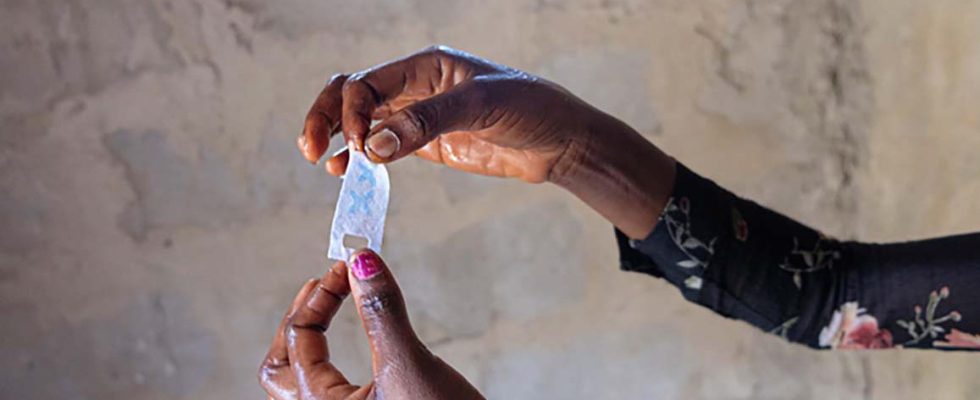The delicate pieces of soap come off the roll. You pull them off like a paper ticket. They are as long as a finger, just long enough for a hand wash. With this product, designers and public health researchers from Great Britain and Tanzania want to improve hand hygiene in poorer countries.
The strips are based on a thin bamboo fabric to which commercial soap is applied and then dried. Rolled up in a dispenser – similar to a container for Tesa film – the pieces can be pulled out individually. There is also a version where the strips hang side by side on a piece of cardboard. After use, the mini soaps can be thrown into the toilet; they are biodegradable.
The researchers around Edward Brial from the Dyson School of Design Engineering at Imperial College London tested the product in Tanzania, where soap near the toilet is standard in only a few households – and the risk of infectious diseases increases. The subjects from twelve families accepted the new development well, the researchers wrote in the journal PlosOne.
The inventors point out the advantages that the soap is easy to dose and that water consumption should also be low because the substance stores the water that is needed for lathering. The product is hygienic because everyone pulls their own strip from the dispenser. The mini soaps are also easy to transport; one test person reported that she gave her children the pieces of fabric to take to school. Retail sale is possible and could be beneficial at public toilets or for people wanting to try the new product first. The researchers also assume that their development can be produced relatively easily and inexpensively.
However, the economic issues still need to be clarified. The test subjects were given the soaps. How big the demand will be under real conditions, what price will be reasonable in the end, whether producers and dealers will find each other, whether aid organizations would perhaps also step in to finance – all this is not clear.
Conventional hand washing products were often perceived as unhygienic
The work of the scientists is not a revolution in hand hygiene, but rather an interesting new approach. It stems from an in-depth development process that provides insight into how different needs and cultural perceptions can exist between those who want to improve health in poor countries and those who are making the effort.
The researchers developed their soap in a multi-stage process and repeatedly interviewed families and dealers; introduced them to various products and even visited the toilets in the test area. It quickly became apparent that the problem for insufficient hand hygiene was not a lack of education, but rather the acceptance of conventional products.
Most of those surveyed felt that a bar of soap that everyone touched after using the toilet was unhygienic and that using it near the toilet was a waste. If you invest in a decent bar of soap, you save it for washing your body, hair or clothes. The same applies to liquid soap, which also had the problem that there were no high-quality dispensers for it in the households.
Another important user requirement is that soap can be dosed properly so that large amounts of water are not used for washing. The people for whom the new product was designed have to bring their water into the house in canisters and jugs. It’s a precious commodity. And of course the soap has to be cheap. In resource-poor areas, hand hygiene competes with other needs such as food, children’s education and safe housing.
It has been shown many times that priorities can differ between aid organizations and recipients of this aid. In the current study, the researchers learned, for example, that water dispensers distributed by aid organizations, especially if they are of high quality and hygienic, are not used for washing hands, but for storing drinking water and food.
Organizations that distributed bed nets to protect against malaria found time and time again that the recipients used them to fish, protect plants, or display goods for sale on them.
Even if governments or helpers want to motivate people to change their behavior, interests sometimes diverge. Attempts have often been made to persuade people in poorer countries to invest in their own toilet. As a rule, the argument was based on the health benefits. Until researchers started asking questions and learned that the health aspect was just one of many, sometimes even a subordinate one, when people made their decisions for or against a toilet.
Those surveyed saw the relevant advantages of having their own toilet as more security and privacy, no longer having to be ashamed and the economic upgrading of their own house. This is meanwhile in several studies been shown. This work made it clear once again that it can be worthwhile to get to know the views of those in need better and to adjust health efforts accordingly.

